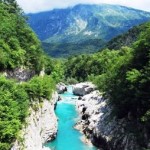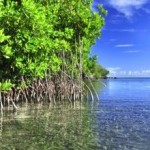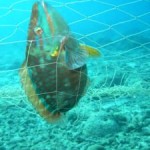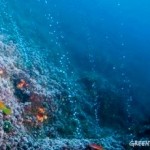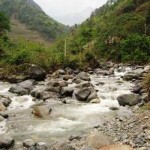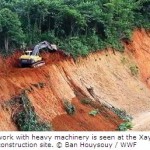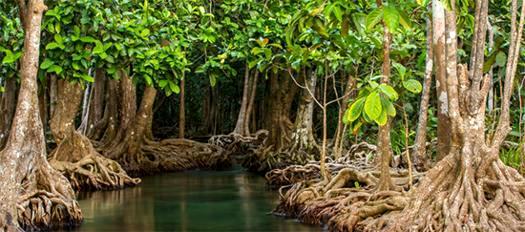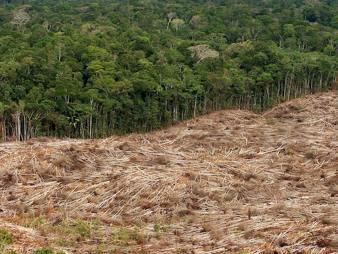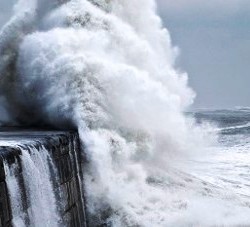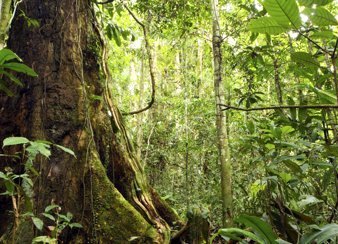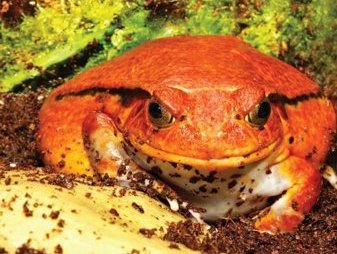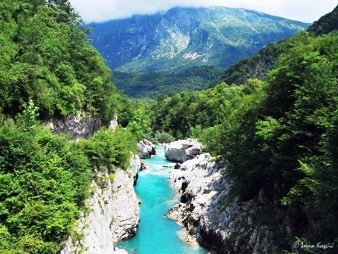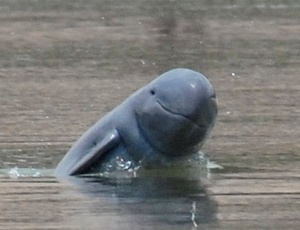
Phnom Penh, Cambodia – The Lao Government’s decision to forge ahead with the Don Sahong Hydropower Project in southern Laos, located just one kilometre upstream of the core habitat for Mekong dolphins, could precipitate the extinction of the species from the Mekong River, warns a new WWF brief.
According to the WWF paper, the dam builders intend to excavate millions of tonnes of rock using explosives, creating strong sound waves that could potentially kill dolphins which have highly sensitive hearing structures. Increased boat traffic, changes in water quality, and habitat degradation represent other major direct risks to the dolphins, along with the cumulative indirect effects of disturbance and stress.
“Plans to construct the Don Sahong dam in a channel immediately upstream from these dolphins will likely hasten their disappearance from the Mekong,” said Chhith Sam Ath, WWF-Cambodia’s Country Director. “The dam’s impacts on the dolphins probably cannot be mitigated, and certainly not through the limited and vague plans outlined in the project’s environmental impact assessment.”
Freshwater Irrawaddy dolphins are critically endangered in the Mekong River, where their numbers have dwindled to around 85 individuals restricted to a 190km stretch of the Mekong River mainstream between southern Laos and north-east Cambodia. The dolphins are already threatened from accidental entanglement in gillnets and low calf survival, additional pressures on the population will likely herald their demise.
“Pressures on the Mekong dolphins are immense, but as long as they survive there is hope,” added Sam Ath. “But the attitude implicit in the dam developer’s impact assessment – that the dolphin population is already vulnerable and therefore should not stand in the way of development – will do nothing but seal their fate.”
In September last year, Laos announced its decision to proceed with the Don Sahong dam on the Mekong mainstream, bypassing the Mekong River Commission’s (MRC) consultation process. The dam will block the only channel suitable for year-round fish migration, putting the world’s largest inland fishery at risk. Despite objections from neighbouring countries, construction is expected to start soon and finish in early 2018.
Alternatives to the Don Sahong dam exist, such as the Thako Project, which could generate approximately the same amount of electricity as Don Sahong but at lower cost and with far less impacts as it does not involve building a barrier across any of the channels of the Mekong mainstream. Unfortunately, the Thako project cannot move ahead if the Don Sahong dam proceeds as they would be competing for the same water.
“It is not too late to suspend the Don Sahong project and consider smarter alternatives,” said Gerry Ryan, Technical Advisor with WWF-Cambodia and author of the brief. “Not building the Don Sahong dam is not an irreparable blow to the development aspirations of Laos, or their ability to produce electricity, but building it will almost certainly cause the extirpation of their dolphins and threaten critical fisheries.”
Mekong dolphins also have great cultural significance to local communities and bring tangible livelihood benefits. “Dolphin-watching tours are a major contributor to growth, bringing in much needed income to local communities,” added Ryan. “It is clear that saving the dolphins also means smart development.”
The dolphins are also an important indicator of the health and sound management of the freshwater resources, and their decline could signal a potentially devastating decline in the health of the entire river ecosystem.
WWF is calling for the suspension of the Don Sahong dam to allow decisions to be reached using sound science and in consultation with impacted countries. “Lower Mekong countries are bound by the MRC agreement to hold inter-governmental consultations before proceeding with dams that impact their neighbours,” said Sam Ath. “Laos’ failure to honour the consultation agreement is threatening trans-boundary cooperation, the livelihoods and food security of millions, and critically endangered species.”
Check the following link to read/download the Full Paper – “The Don Sahong Dam and the Mekong Dolphin”:
http://awsassets.panda.org/downloads/donsahong_dolphin_lr_feb2014.pdf
Source: WWF.

